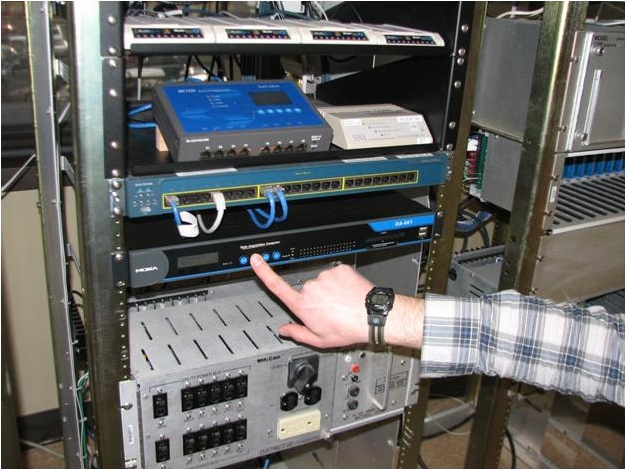UPDATE: Wednesday, April 20th, 2011
In the time since the site visit to Spring Garden (Caltrans District 2) and the kick-off meeting for Phase 2, significant progress has been made on the Automated Safety Warning Controller project.
Phase 2 development started with a review of the existing code modules developed in Phase 1 to re-factor code, and to evaluate and improve memory usage. In addition, a new installation script was created to automate and streamline the Controller installation process. The latest release of the Controller code and associated release notes were then sent to Ken Beals at Caltrans District 2 for testing.
The project team has also been adapting Controller for the rack mounted MOXA DA-661-LX, which is preferred by Caltrans over the MOXA UC-7420 that was used in Phase 1. The project team is currently working to modify the existing Controller software to operate correctly on both the DA-661 and the UC-7420, including adjusting the front panel interface to work with the smaller LCD display on the 661. Aside from adapting the interface to work with both systems, special attention is being given to improving interface usability and functionality for both device models.
The rack mounted MOXA DA-661-LX is shown below. The UC-7420 is on the rack above the 661. In the photo, project team member Kelvin Bateman is using the front panel interface on the 661. Ken Beals will test the Controller application in the field with two additional MOXA DA-661-LX rack mount computers that the project team will configure and then send to Caltrans for testing purposes.

Photo by Leann Koon
The Controller system’s hardware and software interfaces are designed for remote management and data acquisition, and the system includes extensive programming and scripting capability. The Controller system can be used to automatically collect and interpret data from a number of field elements and then actuate a safety warning, for example on a Changeable Message Sign (CMS). Currently, Caltrans Transportation Management Center (TMC) operators use a Satellite Operations Center Command System (SOCCS) written in-house for communication with a CMS; part of the Phase 2 Controller project is the design and implementation of a SOCCS program that TMC operators could use to monitor and control basic functions of Controller devices in the field. A draft set of requirements and an interface design have been developed and work will begin on the implementation when the final design has been reviewed and approved.
The proposed next Controller pilot test site will be near Weed in Siskiyou County California, along Interstate 5, implementing a wind warning alert.
Look for further Automated Safety Warning Controller project updates as field site testing progresses.

